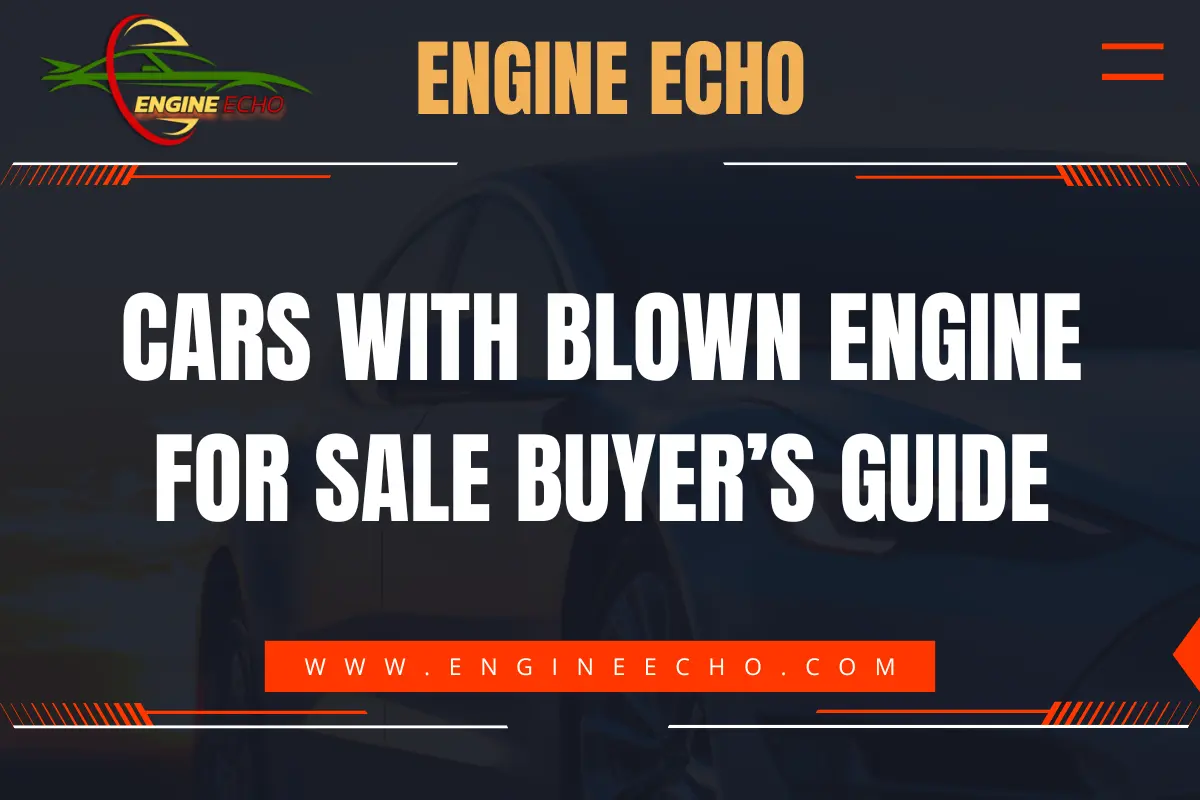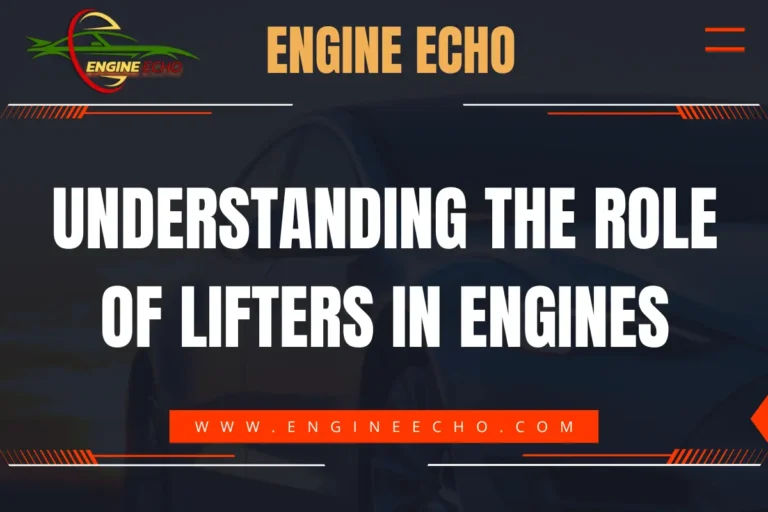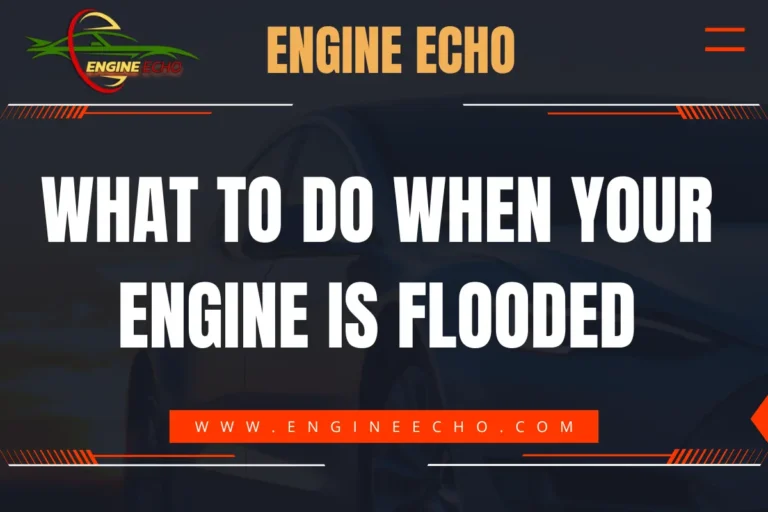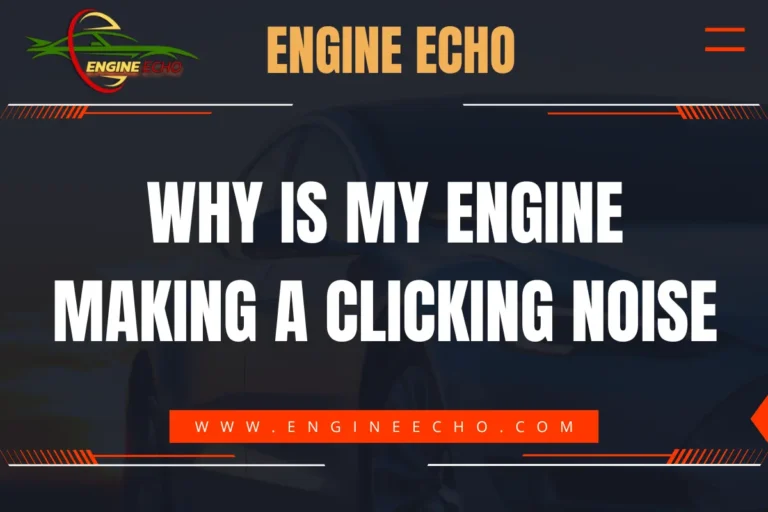Cars with Blown Engine for Sale: Buyer’s Guide

Key Takeaways
- Blown engines can be a cost-effective entry point into car ownership or flipping.
- Assessing the extent of damage and repair costs is crucial before making a purchase.
- Legal considerations, including title status and disclosure requirements, are key to a safe transaction.
- Financing options for cars with blown engines are limited but available.
- Careful negotiation can significantly reduce the purchase price.
- Weighing the decision between repairing or replacing the engine is vital for maximizing value.
- Understanding the resale market can help in flipping cars for profit.
Introduction
There’s something about finding value where others don’t see it that really gets me excited—especially when it comes to cars with blown engines. Over the years, I’ve come to see these vehicles not just as challenges, but as opportunities waiting to be seized. Whether you’re a seasoned mechanic or someone looking for a deal, this guide will walk you through everything you need to know about buying a car with a blown engine. I’m writing this guide because I’ve seen too many buyers overlook the potential in these vehicles—it’s time to shed some light on this often misunderstood market.
Understanding Blown Engines
Definition of a Blown Engine
When we talk about a “blown engine,” we’re usually talking about an engine that’s gone through a serious breakdown—something that’s going to take a lot of work to get running again. This can happen for a bunch of reasons, like overheating, losing oil pressure, or a mechanical failure inside the engine.
Signs and Symptoms of a Blown Engine
Spotting the signs of a blown engine early can save you a ton of headaches down the road. I’ll never forget the first time I lifted the hood of a car and realized the engine was blown—my heart sank, but it also sparked a curiosity that led me to where I am today. Some things to look out for include:
- Smoke: White or blue smoke coming out of the exhaust.
- Strange Noises: Loud knocking or metallic sounds from the engine.
- Dashboard Warning Lights: Check engine or oil pressure warnings.
- Loss of Power: Significant drop in engine performance.
Common Types of Engine Damage
Different types of damage can lead to a blown engine:
- Piston Failure: When pistons break or get damaged, it can wreak havoc on the engine block.
- Cracked Engine Block: This usually means the engine’s toast and needs to be completely replaced.
- Head Gasket Failure: A blown head gasket can mix coolant with oil, leading to a seized engine.
Why Do People Buy Cars with Blown Engines?
Even with all the risks, there are some solid reasons why people go for cars with blown engines:
- Cost Advantages: You can usually pick up these cars for a fraction of what they’re worth.
- Potential for Profit: If you know your way around an engine, fixing and flipping these cars can be pretty lucrative.
- Parts Harvesting: Sometimes the parts alone are worth more than the whole car.
Evaluating Cars with Blown Engines
Assessing the Extent of Damage
Before you jump in, you’ve got to figure out just how bad the damage is. I learned the hard way that a visual inspection is just the beginning. Look for signs like oil leaks, coolant contamination, and any visible damage to engine parts. But trust me, getting a pro to check it out is key—you don’t want any nasty surprises after you’ve made the purchase.
Estimating Repair Costs
Repair costs can be all over the place depending on what’s wrong and what kind of car you’re dealing with. Here’s what to keep in mind:
- Type of Damage: A blown head gasket might cost a few hundred bucks, but a full engine replacement could set you back thousands.
- Parts Availability: If the car is rare or imported, parts might be pricey or hard to find.
- Labor Costs: Doing it yourself can save some money, but paying a mechanic can add up quickly.
Tools and Resources for Evaluation
Having the right tools and resources can make evaluation easier:
- Diagnostic Tools: An OBD-II scanner can help you pinpoint engine issues.
- Online Resources: Websites like Kelley Blue Book and RepairPal can give you estimates on parts and repairs.
Where to Find Cars with Blown Engines for Sale
Online Marketplaces
The internet’s a goldmine for finding cars with blown engines:
- eBay Motors: You’ll find a wide range of vehicles, often with detailed descriptions from sellers.
- Craigslist: Local listings can offer some real bargains, but watch out for scams.
- Copart: This auction site specializes in salvage and insurance auction vehicles.
Local Dealerships and Auctions
If you’d rather see the car in person before buying:
- Auto Salvage Yards: A good spot for cars that have been written off by insurance companies.
- Public and Private Auctions: These can be hit-or-miss, but you can sometimes find great deals.
Networking and Word of Mouth
Never underestimate the power of personal connections:
- Social Media and Forums: Places like Facebook Marketplace and car enthusiast forums are great for finding deals.
- Car Enthusiast Groups: These communities often have members looking to offload project cars.
Legal Considerations
Title Status
Understanding the title status of a vehicle is crucial. I always recommend getting a vehicle history report before making any purchase—it’s the first step in protecting yourself from unwanted surprises.
- Salvage Titles: Issued when an insurance company declares the car a total loss. These titles indicate significant previous damage.
- Clean Titles: Rare for cars with blown engines, but they indicate no major prior damage.
Disclosure Requirements
Sellers have to play by the rules and tell you what’s really going on with the car. This includes any known mechanical issues, title status, and past accident history. If they don’t, they could be in hot water legally.
Buyer’s Rights and Protections
As a buyer, you have rights:
- Lemon Laws: These vary by state and protect you from buying a defective vehicle.
- Fraud Prevention Tips: Always get a vehicle history report and think about a pre-purchase inspection.
Financing Options for Cars with Blown Engines
Is Financing Available?
Getting a loan for a car with a blown engine isn’t exactly easy:
- Limited Options: Traditional lenders might not want to finance a car that’s got known issues.
- Higher Interest Rates: If you do find financing, expect to pay more because of the higher risk.
Alternative Financing Solutions
If the usual routes aren’t working, try these:
- Personal Loans: Might give you better terms than a standard auto loan for a damaged car.
- Credit Cards: Good for smaller purchases, but watch out for those high-interest rates.
- PayPal Credit: Offers flexible financing for online buys.
Negotiation Tips
How to Negotiate the Best Price
Negotiation can feel like a game of chess, but trust me, with the right moves, you’ll be driving away with a steal:
- Research Market Values: Know what the car’s worth both as-is and after repairs.
- Common Negotiation Strategies: Be ready to walk away if you need to, and use the car’s condition as a bargaining chip.
Leveraging the Car’s Condition
The fact that the engine is blown can be a powerful negotiation tool. Point out the cost of repairs and the risks involved to lower the asking price.
Repair or Replace?
When to Repair
Sometimes, fixing the engine is the smarter move. I’ve been in situations where a simple repair was all it took to get the car back on the road:
- Minor Damage: Repairing issues like a blown head gasket might be more cost-effective than replacement.
- Rare Vehicles: For classic or rare cars, repair might be the only viable option.
When to Replace the Engine
Replacing the engine might be the better option when:
- Severe Damage: Major issues like a cracked engine block often mean you’re better off with a new engine.
- Cost-Effectiveness: Sometimes, it’s actually cheaper to replace the engine than to try and fix the old one.
Engine Swapping Considerations
If you decide to replace the engine, keep this in mind:
- Compatibility Issues: Not all engines are a perfect match.
- Legal and Insurance Implications: Swapping in a different engine can affect your insurance and registration.
DIY vs. Professional Repair
Pros and Cons of DIY Repair
Doing it yourself can save money but comes with risks. I’ve tackled a few DIY projects myself, and while it’s rewarding, it’s not for everyone:
- Cost Savings: You’ll dodge those hefty labor costs.
- Skill Requirements: DIY repairs need a good level of mechanical know-how.
When to Hire a Professional
Some repairs are best left to the experts:
- Complex Repairs: Rebuilding or swapping an engine usually requires specialized tools and skills.
- Safety Concerns: Make sure the job’s done right to avoid issues later on.
Finding a Trustworthy Mechanic
Choosing the right mechanic is crucial:
- Recommendations: Get referrals from friends or online communities.
- Certifications: Look for ASE-certified mechanics to ensure quality work.
Reselling Cars with Blown Engines
Flipping Cars for Profit
Buying and reselling cars with blown engines can be profitable:
- Buy Low, Sell High: The trick is to buy cheap enough to cover repairs and still make a profit.
- Value-Added Repairs: Focus on fixes that really boost the car’s resale value.
Target Market for Reselling
Not everyone’s going to want a car with a blown engine, but:
- Mechanics: They can fix it themselves and might be looking for a deal.
- Hobbyists: Folks who love a good project car.
Marketing Strategies
Effective marketing can help you sell the car faster:
- Advertise Effectively: Be honest in your descriptions and use good quality photos.
- Targeted Platforms: Sell where your target buyers are most likely to be.
Case Studies
Successful Flips
- Example 1: A mechanic buys a car with a blown engine for $1,000, spends $2,000 on repairs, and sells it for $5,000—netting a $2,000 profit.
- Example 2: A classic car enthusiast picks up a vintage car with a blown engine, does a full restoration, and flips it for three times the purchase price.
Costly Mistakes
- Example 1: Underestimating repair costs ends up turning a potential profit into a loss.
- Example 2: Not checking the title properly leads to legal issues and unexpected expenses.
Common Pitfalls to Avoid
Underestimating Repair Costs
A lot of folks end up underestimating just how much those repairs are going to set them back. Always add a little extra to your estimates to cover any surprises.
Overlooking Legal Issues
Make sure all the paperwork is in order before you buy. This includes checking the title status and looking for any outstanding liens.
Ignoring Market Demand
Some cars, even with a blown engine, are more desirable than others. Do your homework to avoid buying a car that’s tough to resell.
Conclusion
Is Buying a Car with a Blown Engine Worth It?
For me, there’s nothing quite like the feeling of bringing a car back to life—challenges and all. Buying a car with a blown engine can be a worthwhile investment for those who are ready for the risks and challenges. Whether you’re looking to save money on a purchase, take on a project, or make a profit through resale, the key is to do thorough research and approach the process with caution.
Final Tips for Buyers
- Always get a professional inspection before purchasing.
- Know the full cost of repairs before making an offer.
- Consider your skill level before attempting DIY repairs.
Looking Ahead
As the market for used cars continues to evolve, the opportunities for buying and selling cars with blown engines are likely to grow. Staying informed and adaptable will be key to making the most of this niche market.
Frequently Asked Questions (FAQs)
What is the average cost to repair a blown engine?
Repair costs can vary widely but typically range from $1,000 to $5,000, depending on the extent of the damage and the car’s make and model.
Can you insure a car with a blown engine?
Yes, but insurance options may be limited. You may need to opt for liability-only coverage until the car is repaired.
What are the risks of buying a car with a blown engine?
The main risks include underestimating repair costs, discovering additional hidden damage, and difficulties in reselling the vehicle.
Is it possible to sell a car with a blown engine?
Yes, there is a market for cars with blown engines, particularly among mechanics, hobbyists, and parts dealers.
Thanks for checking out this article on EngineEcho.com! Hope you found this article: "Cars with Blown Engine for Sale: Buyer’s Guide" helpful! If you liked it and want to dive into more car engine topics, head over to our homepage. There's always something new to discover in the world of engines. Enjoy your reading journey!
Check out our previous article: Cars with VTEC Engine: Honda’s Engineering Marvel






